When you are running a brainstorming session, you create an atmosphere where every idea is welcome and insist that nobody shoots down even the most hare-brained notion, because there might be the kernel of brilliance buried in there somewhere. The objective is to foster an environment of free-thinking to stimulate innovation. However, at the end of the session, or afterwards, someone goes through all the Post-it notes and applies a reality filter so only the best ideas get further investment of time and money.
Well, when producing the latest Future Energy Scenarios (FES) report, the National Grid ESO (NG ESO) seems to have come up with a way to shoehorn in every wacky energy idea but has failed to apply the economic and thermodynamic reality filters.
The report’s authors have subtly altered the report now to discuss “Pathways” instead of “Scenarios”, but confusingly the report is still called “Future Energy Scenarios” not “Future Energy Pathways.” These new pathways are supposed to provide a narrower strategic range of outcomes and instead of being “cost agnostic” they are supposed to bring in “additional economic modelling”. Said modelling is conspicuous by its absence. They are also supposed to have considered “whole system optimisation fundamental to finding the most efficient future energy system across all energy vectors”. Although this latter objective is reserved for future iterations, so we must assume that what they have produced is not the most efficient energy system.
Let us see how well they have done exploring “a narrower range of outcomes to drive more strategic, credible routes to Net Zero”.
Energy Demand
Despite brainstorming every single energy supply technology, they have not extended this thinking to their estimates of energy demand in 2050. They are still projecting per capita energy use to be halved by 2050 (see Figure 1).
As part of that, energy consumed by the residential and transport sectors falls by nearly two-thirds in two of their pathways. As I never tire of saying, halving energy use is extremely dangerous. According to Our World in Data, there are no rich countries with such low energy use (See Figure 2).
We are already using 61.8% less energy per capita than the USA and 16.8% less than the EU27. We are even using less energy per capita than China. Halving our per capita energy use would mean consuming less energy per capita than Mexico, Brazil, Algeria and Uzbekistan use today. All those countries have GDP per capita much less than half of the U.K., with Algeria less than a quarter of ours.
Surely, the first reality test of any energy plan should be that it delivers a growing and prosperous economy.
Deindustrialisation Built In
The economic decline inherent in their energy plan is further illustrated by the amount of energy they think will be used by the Industrial and Commercial (I&C) sector. The headline figures show a 14-17% reduction in energy use by the I&C sector, but the headline figures mask what is going on beneath the surface (see Figure 3).
In their Holistic Transition pathway, as overall I&C energy use falls from 390TWh to 331TWh, the energy consumption of data centres rises from 5TWh last year to almost 62TWh in 2050. So, by 2050, data centres will consume 19% of all I&C energy (and 24% of I&C electricity). This effectively means that the energy consumption of other industrial users like steel, automotive, fertilisers and chemicals will have to fall even more dramatically. However, with such expensive electricity, it is unlikely these data centres will arrive. They are more likely to locate in countries with low energy costs.
Hydrogen Bubble
We know that deindustrialisation will be the outcome because all the pathways utilise considerable amounts of hydrogen (see Figure 4).
The planned use of hydrogen is particularly evident in I&C and in power generation. They plan to make this hydrogen primarily from two sources: steam methane reformation (SMR) with carbon capture (CCUS), otherwise known as blue hydrogen, and electrolysis using otherwise curtailed electricity from renewables, also known as green hydrogen (see Figure 5).
There are many problems with this idea. First, SMR is only about 60-65% efficient. SMR with CCUS is unproven and is bound to be even less efficient because of the extra energy required to capture the CO2 emissions and pump them underground. If we are generous and say the overall process is 50% efficient, then hydrogen produced by this method must cost at least twice as much as the gas it is made from. At the time of writing, U.K. and continental European gas costs about 4.5 times more the gas in the U.S. (see Figure 6).
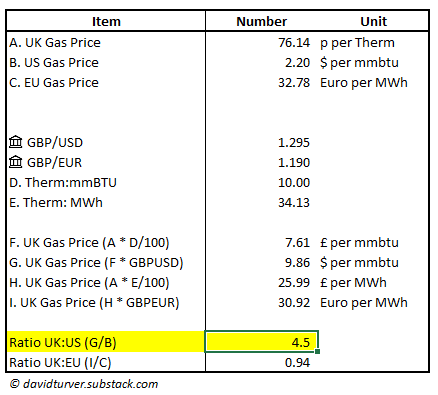
This means that blue hydrogen would be at least nine times more expensive than U.S. gas. No energy intensive industry will want to locate in the U.K. if their main input cost is nine times more expensive than in America.
It is an even worse story with green hydrogen. Late last year, the Government announced the results of its Hydrogen Allocation Round and agreed contracts for green hydrogen at £241/MWh. This is more than nine times the cost of U.K. gas and some forty-two times the cost of gas in the U.S. Yet, NG ESO claim “a fast rollout of clean hydrogen production capacity and adequate network could catalyse industrial decarbonisation”. With such an energy cost differential, industries are going to dematerialise to cheaper locations rather than decarbonise here. Again, the economic reality filter has not been applied. Of course, this commitment to hydrogen was published just as billionaire Andrew Forrest scaled back his ambitions for green hydrogen with the loss of 700 jobs.
As can be seen from Figures 4 and 5, all three of the pathways that achieve Net Zero envisage significant power generation from hydrogen, and significant amounts of that hydrogen to be blue hydrogen made from methane. They are proposing to take methane, lose at least half the embedded energy to make hydrogen and then burn the hydrogen to make electricity. Of course, it is far more thermodynamically efficient to simply burn the methane to produce electricity. Clearly, the thermodynamic reality filter has not been applied either.
High Electricity Costs
We also know electricity costs are going to soar because of the vast amounts of curtailment they envisage. Curtailment means that wind farms are turned off, or curtailed, when the wind is blowing because there is insufficient demand for their output. Wind farm operators will either demand to be paid for this curtailed electricity or will adjust the prices they bid into auctions to take this curtailment into account.
Figure 7 shows that two of their Net Zero pathways envisage curtailing over 60TWh of electricity in the late 2030’s, or over 20% of generation last year.
These curtailment levels are presented after allowing for some of the surplus electricity is used to make hydrogen and capture CO2 from the atmosphere using Direct Air Capture.
Carbon Capture Unicorns
Despite all the spending, the carbon reduction measures set out in their pathways do not get us to Net Zero. There will be residual emissions in sectors such as aviation and agriculture. They are planning to offset these emissions by spending even more on unicorn technologies such as Bio-Energy with Carbon Capture and Storage (BECCS), BECCS enabled hydrogen and BECCS for biofuels. As discussed elsewhere, BECCS is the process of chopping down trees in North America, pulping and drying them into pellets, then shipping them to power stations like Drax to be burnt to produce electricity. It is enormously costly and the Royal Society of Chemistry produced a report that suggested BECCS using willow pellets from Louisiana in America would have an EROI of less than one, making the whole process a net energy sink. Moreover, the supposed negative emissions arise because the CO2 emitted by burning the trees is not included in the calculations. Both the economic and thermodynamic filters have not been applied again. They also plan to utilise Direct Air Carbon Capture and Storage (DACCS) to capture CO2 from the air and pump it into permanent storage. They plan to use industrial waste heat and renewable electricity when the wind is blowing too hard and supply exceeds demand.
They also plan to use something called, LULUCF, which means Land Use, Land Use Change and Forestry to sequester more CO2 out of the atmosphere. Basically, this means planting more trees and restoring peatlands. It is rather odd that they plan to chop down loads of trees for BECCS to produce negative emissions and also plant more trees under LULUCF for even more negative emissions.
Collision Course With Labour Policy
There are some clouds on the horizon for NG ESO now the new Labour Government is in place. First, Labour have committed to decarbonise the grid by 2030, however, all of the FES pathways show there will be significant CO2 emissions from the electricity system by 2030 (17-44 Mt, compared to 55Mt last year). Presumably, NG ESO does not believe Labour’s plan is a “credible route to Net Zero”.
Second, Ed Miliband is stopping further exploration of the North Sea, meaning our domestic gas supply will fall faster than anticipated. However, NG ESO forecast that we will still be using gas beyond 2050 on all Net Zero pathways and we will be importing almost all of it. Something must fuel those gas plants with CCS and make all that blue hydrogen. Figure 8 shows the annual supply and import dependency for the Hydrogen Evolution pathway.
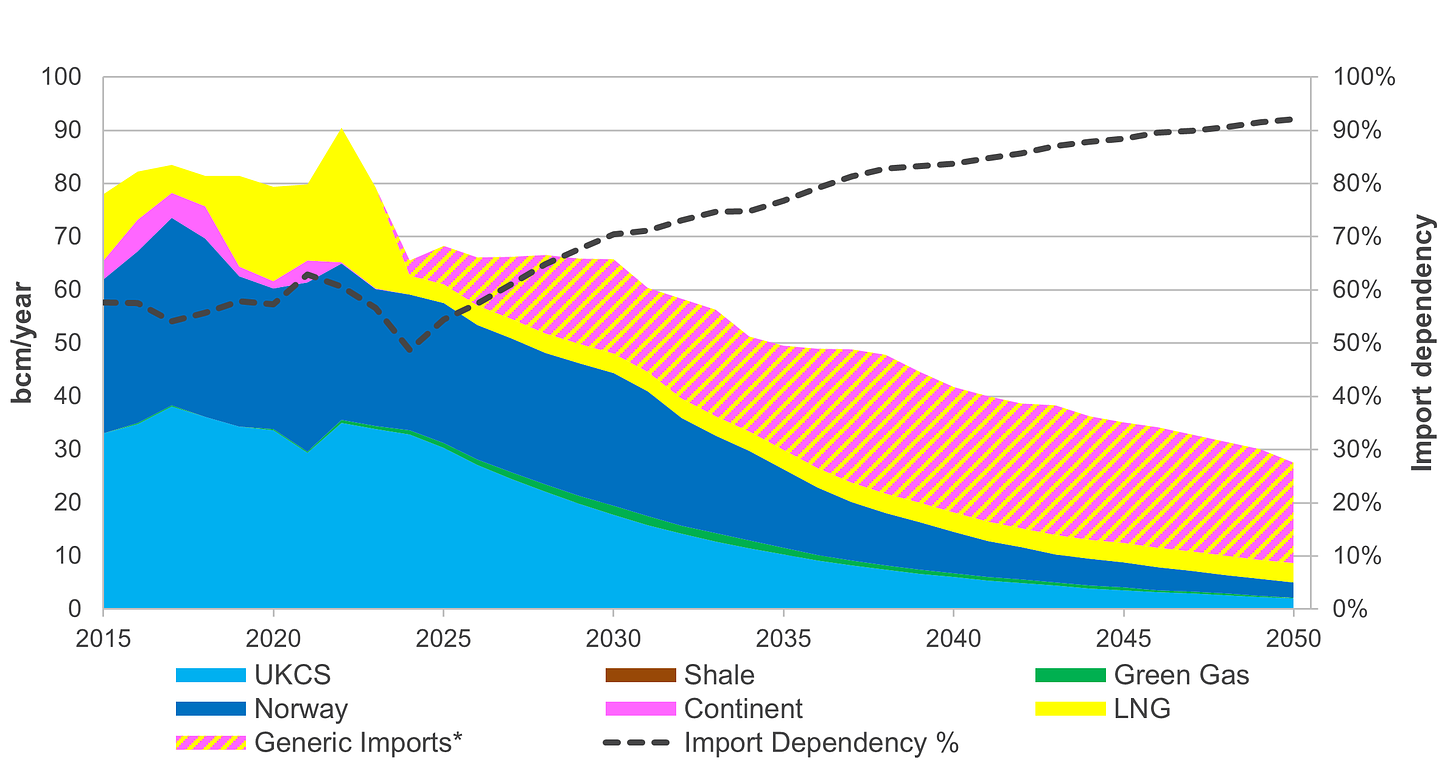
The scale of the import dependency shows the stupidity of stopping new North Sea exploration and development and banning fracking.
Another source of friction may be what Miliband might see as a lack of ambition about the installed capacity of renewables. In their manifesto, Labour promised to double onshore wind, triple solar and quadruple offshore wind capacity by 2030. As Figure 9 shows, all the pathways miss Labour’s target except for onshore wind under the holistic transition pathway.
This further illustrates that Miliband’s targets are not credible.
Big Brother Controls
The report also recommends widespread use of time-of-use tariffs (TOUT) stating: “consumers need to be rewarded for turning down demand at peak times and turning up demand when there is excess generation”. In other words, consumers need to organise their lives around the grid rather than the grid being designed to meet the needs of their customers. They also call for appliances to be controlled automatically to “optimise” demand and coordinate with price signals in the TOUT tariffs.
Totalitarian control of energy use is bound to be a feature of an energy scarce environment, not a bug.
Demands for Even More Subsidies
The FES 2024 report claims they will “deliver a future where everybody has access to clean, reliable, affordable energy”. They also claim that solar, onshore and offshore wind “remain one of the lowest cost options to meet our energy needs”.
However, the document makes a direct call for subsidising the cost of hydrogen and makes further demands for policy support, financial support, incentives, price signals, business models and market mechanisms. These are all code words for subsidies. They also make the explicit demand for levies on electricity bills (another word for the renewables subsidies) to be “rebalanced” on to gas. In other words, most of the proposals they have put forward are not viable without subsidies and the true cost of those subsides must be shifted from electricity on to gas. We know that if any technology needs a subsidy, it is not cheaper than the alternative, now we have NG ESO implicitly acknowledging that reality.
It is clear our bills are going up, and NG ESO has not applied an economic reality check to its work.
Conclusions
Despite claiming their new pathway approach has created “credible” choices to propel us on the route to decarbonisation, it is clear the opposite is true. This is a report where all technologies must have prizes regardless of the technical or economic viability. Many of the technologies they are recommending are unproven at scale and woeful economics.
They have clearly simply brainstormed all the potential technologies and shoe-horned them into their pathways without applying any kind of economic or thermodynamic reality filters.
They are obviously somewhat concerned about energy scarcity and intermittency because of their emphasis on TOUTs and automatic control of appliances. Instead of re-thinking and coming up with a plan for energy abundance, they continue down the path of expensive, scarce energy and Big Brother controls.
If this were just another think-tank spouting nonsense it would not matter very much, but the National Grid Electricity System Operator (NG ESO) is transforming into the National Energy System Operator (NESO), where they are supposed to be planning the entire energy system. If this is the best they can do, we are in big trouble. And now Labour is in power, things can only get worse.
David Turver writes the Eigen Values Substack page, where this article first appeared.
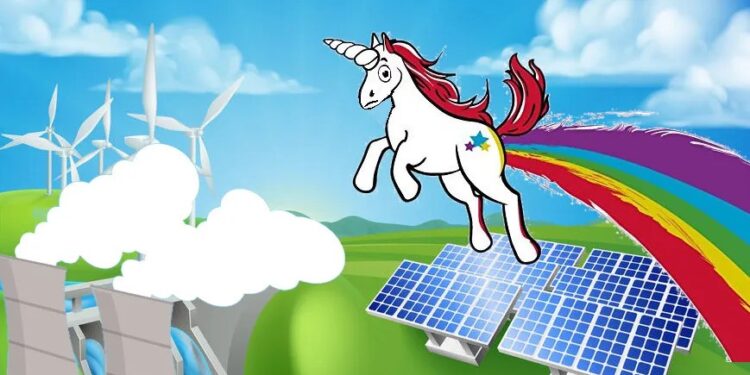
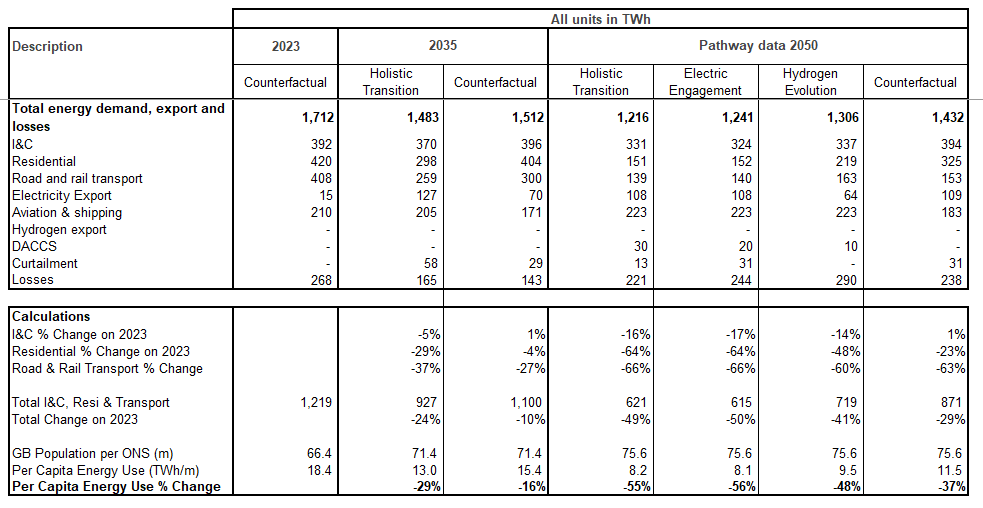
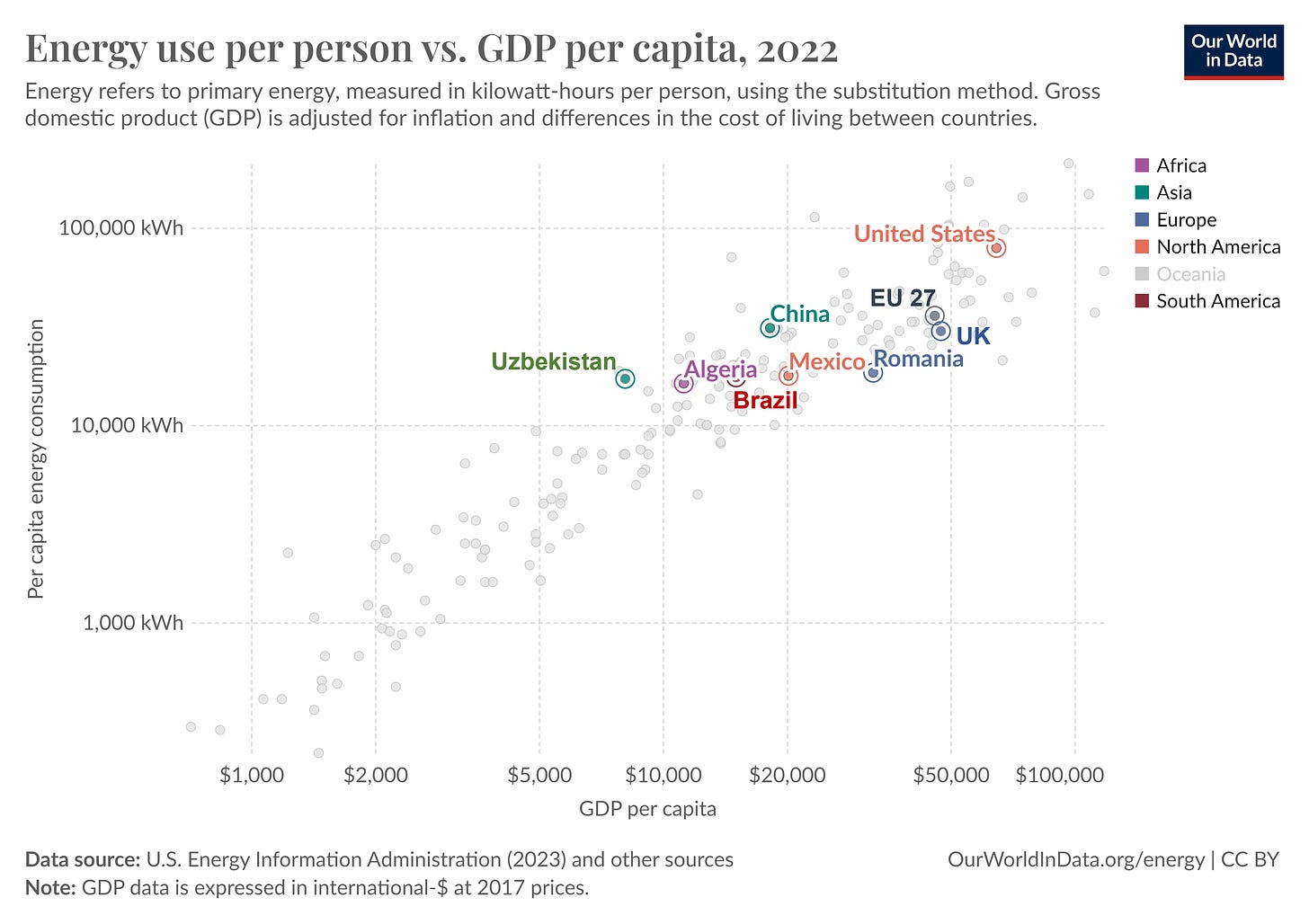
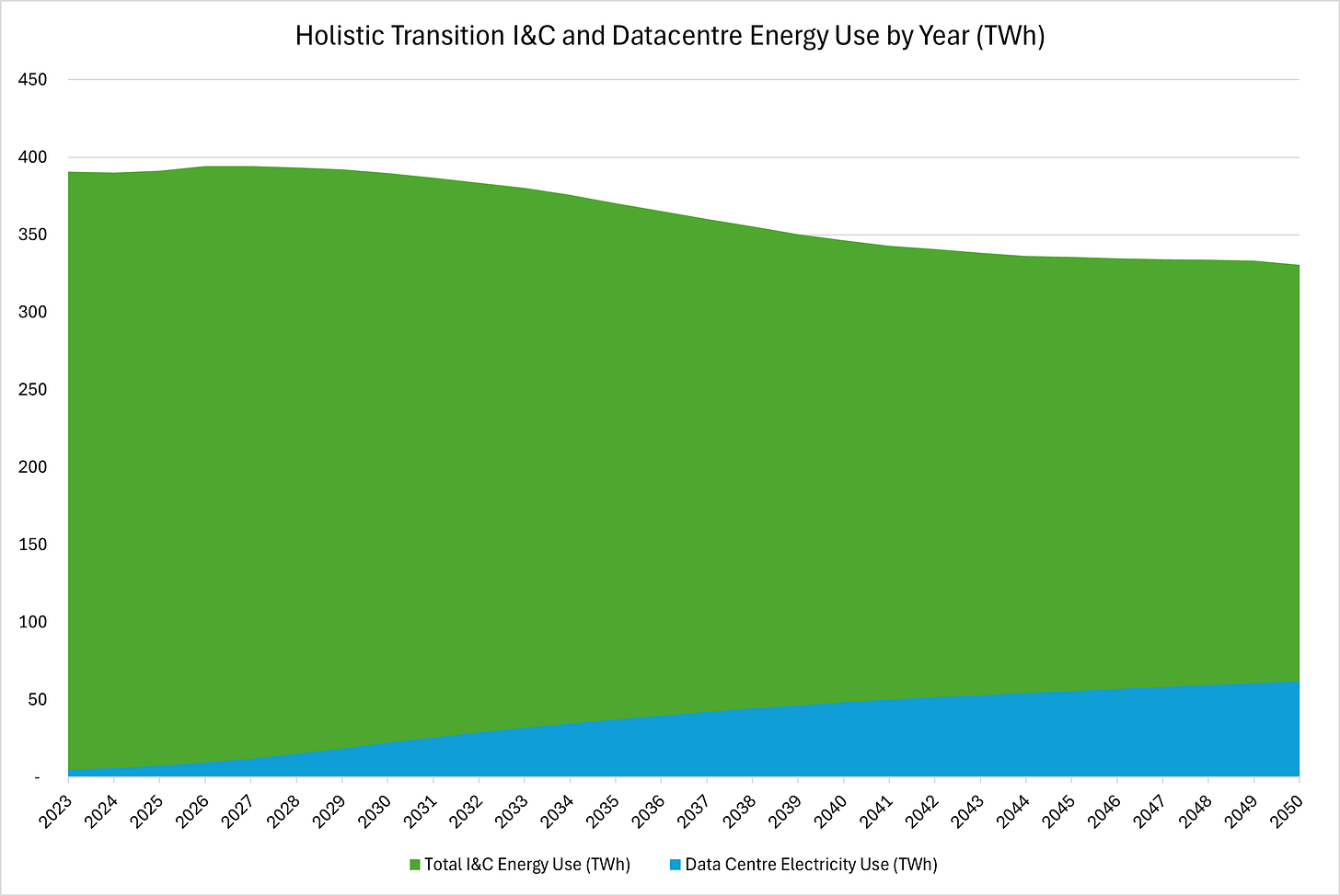
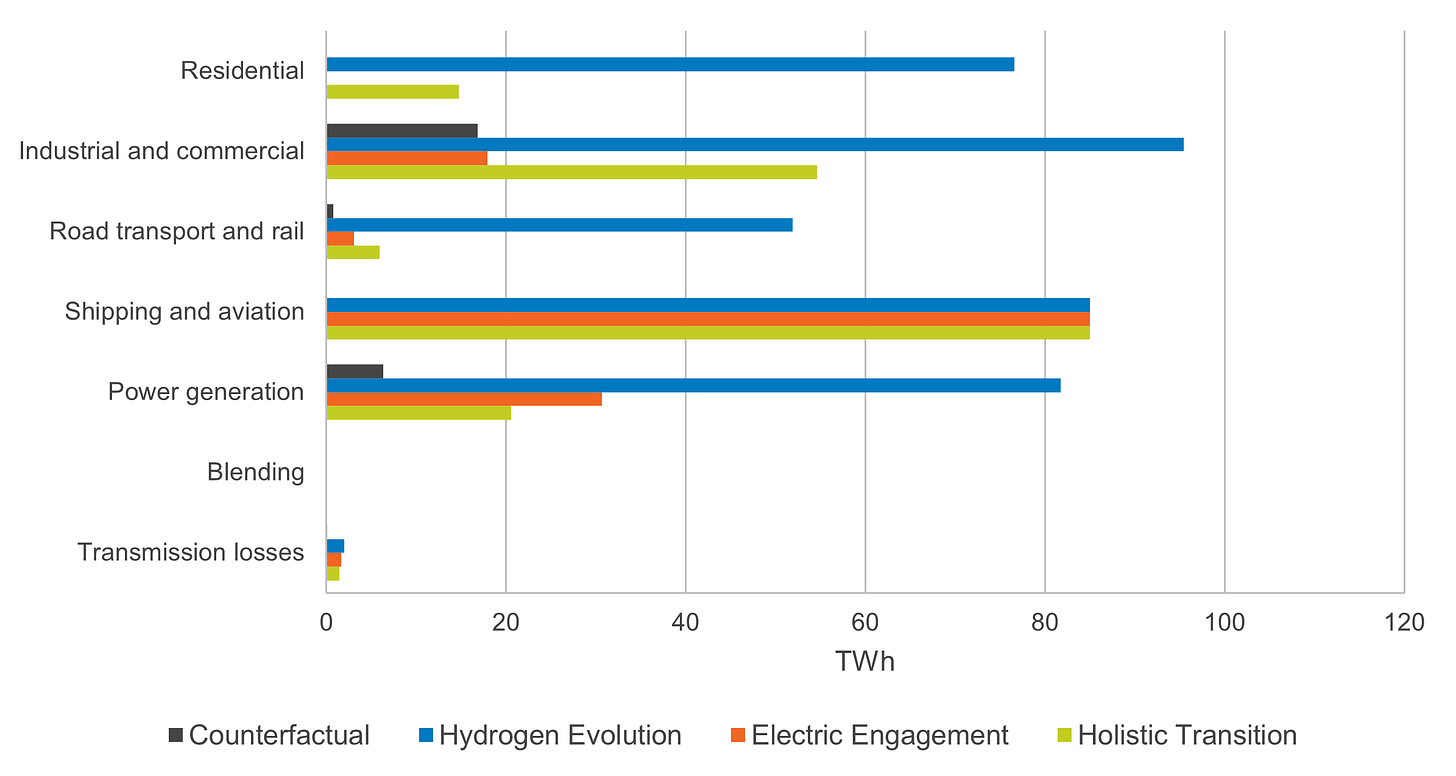
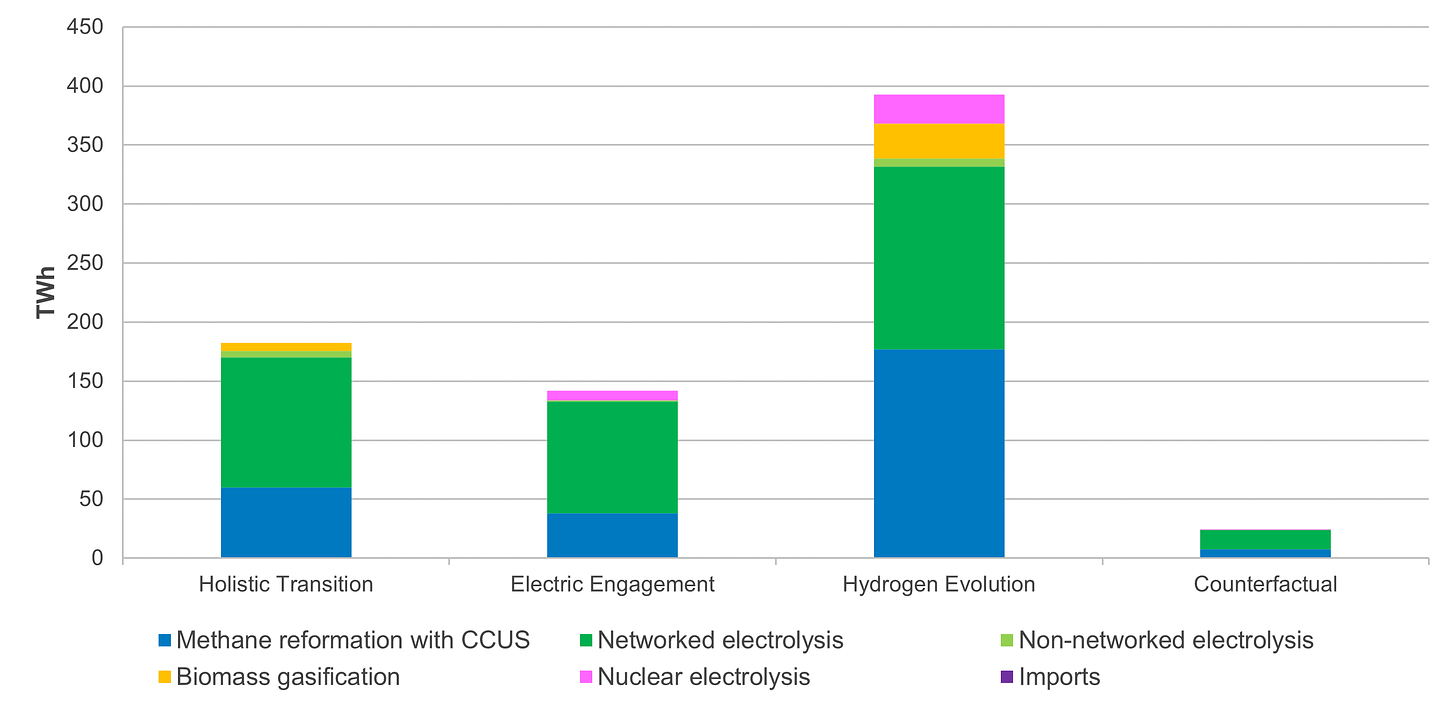
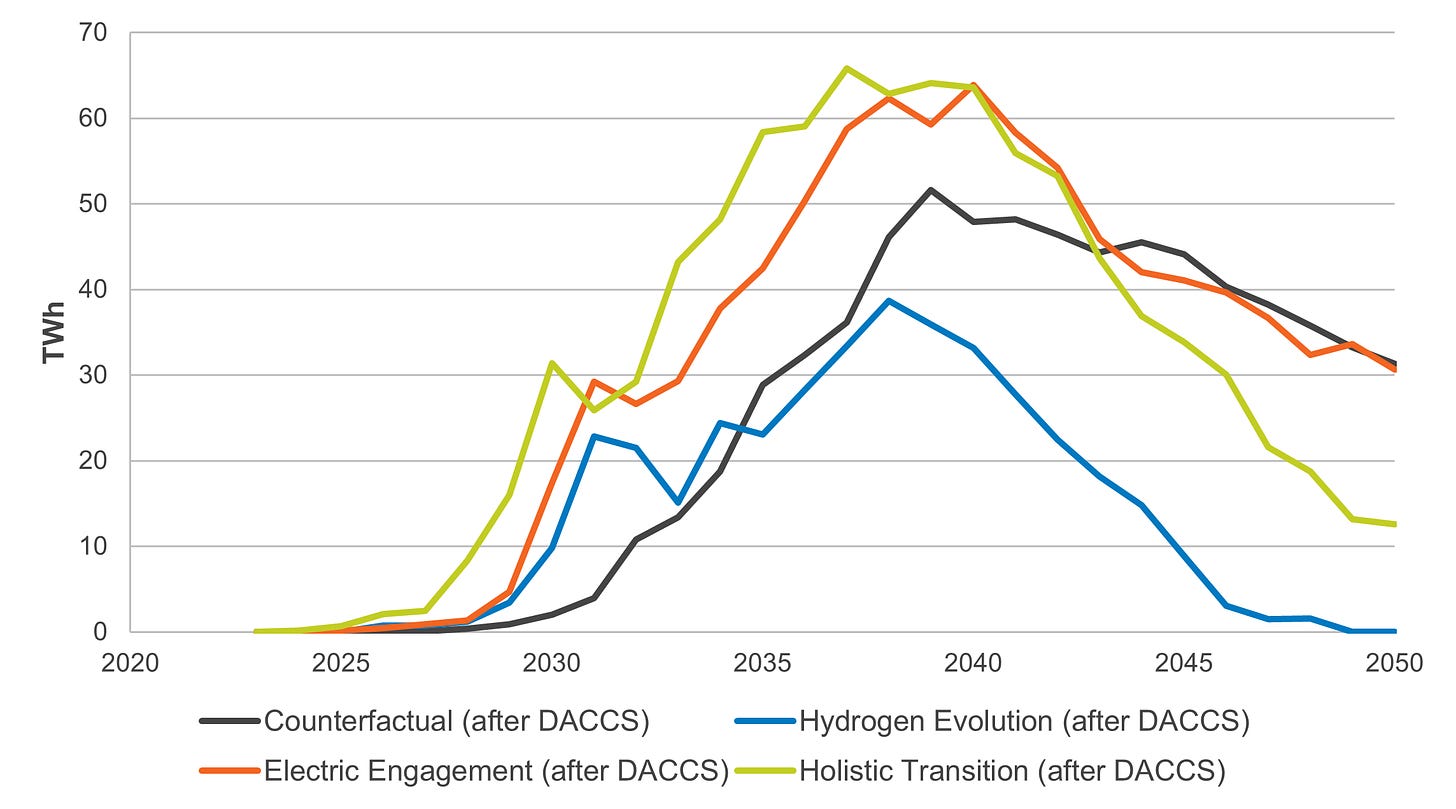
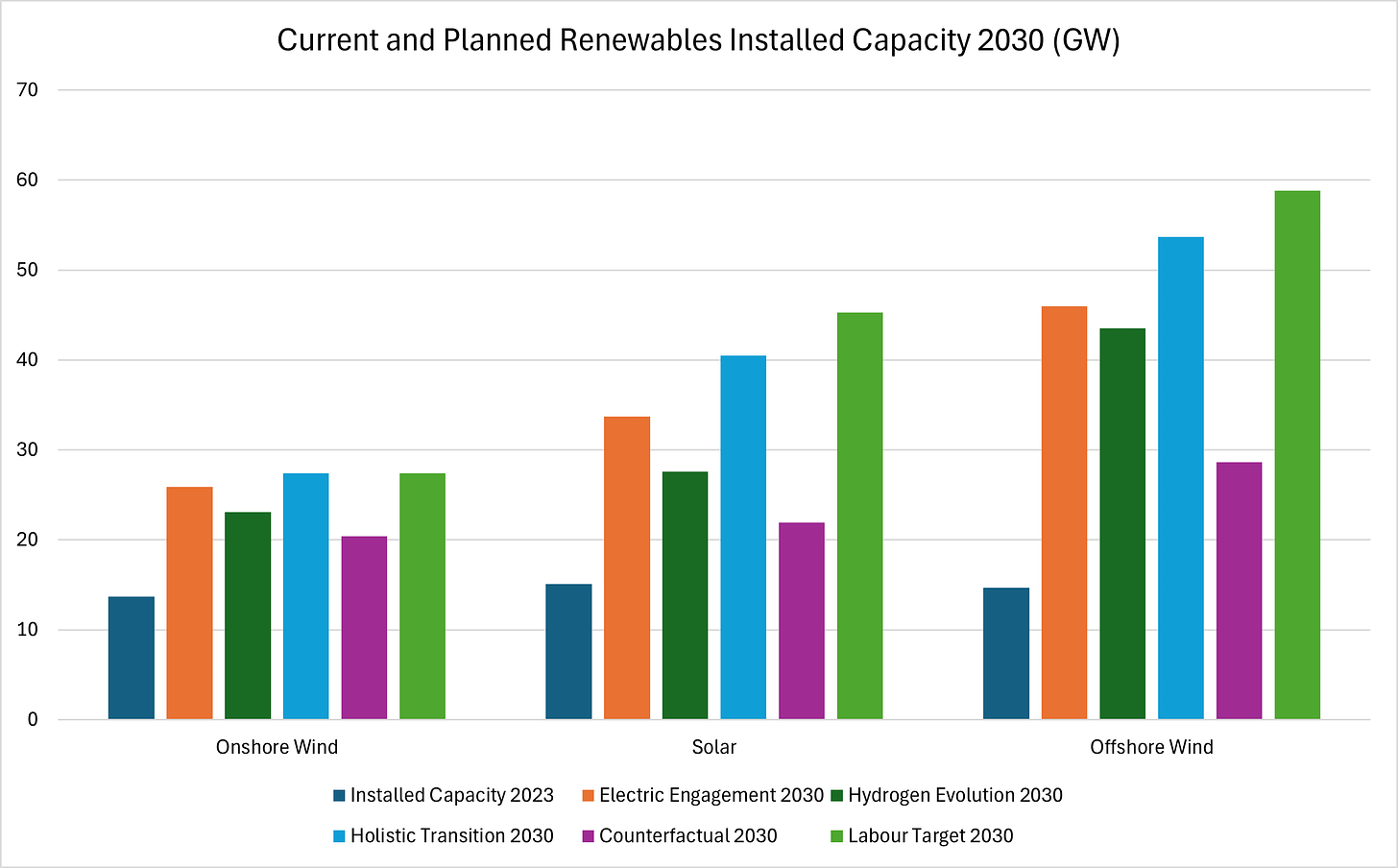











To join in with the discussion please make a donation to The Daily Sceptic.
Profanity and abuse will be removed and may lead to a permanent ban.
We are in peril. I hope the following quotes do not need descriptions as to which is true.
“In fact, the life of all mankind is in danger because of global warming resulting to a large degree from the emissions of the factories of the major corporations; yet despite that, the representative of these corporations in the White House insists on not observing the Kyoto accord, with the knowledge that the statistics speak of the death and displacement of millions of human beings because of global warming, especially in Africa”
Osama bin Laden
“If your experiment needs statistics, you ought to have done a better experiment”
Ernest Rutherford
“We live in an unscientific age in which almost all the buffeting of communications and television-words, books, and so on-are unscientific. As a result, there is a considerable amount of intellectual tyranny in the name of science.”
Richard Feynman
“For a successful technology, reality must take precedence over public relations, for nature cannot be fooled.”
Richard Feynman
“We’ve arranged a global civilization in which most crucial elements profoundly depend on science and technology. We have also arranged things so that almost no one understands science and technology. This is a prescription for disaster. We might get away with it for a while, but sooner or later this combustible mixture of ignorance and power is going to blow up in our faces.”
Carl Sagan
We have also arranged things so that almost no one understands science and technology. This is a prescription for disaster. Carl Sagan
I hope no one believes this total crap. There are plenty of people who do understand Science, Engineering, Business and Planning. Their work results in what the public calls Technology.
The problem is that Westminster, Whitehall, the BBC, and the rest of the Political Bubble ensure that these knowledgeable people are excluded from any decision making or influencial role within the state sector, and also from the part of the private sector that it controls.
It’s why the 2008 Climate Change Act is still on the books causing mayhem. Arts, Humanities and Social Science graduates, from both universities, are absolutely clueless and act as though they were acting as secret agents for our enemies.
The trouble is that those that understand how to do things are now merely staff. Those in charge are in charge because they think they ought to be in charge, where as those that understand how to do things are not always that interested in being in charge.
Be afraid be very afraid;
This article includes the item;
The report also recommends widespread use of time-of-use tariffs (TOUT) stating: “consumers need to be rewarded for turning down demand at peak times and turning up demand when there is excess generation”. In other words, consumers need to organise their lives around the grid rather than the grid being designed to meet the needs of their customers. They also call for appliances to be controlled automatically to “optimise” demand and coordinate with price signals in the TOUT tariffs.
Totalitarian control of energy use is bound to be a feature of an energy scarce environment, not a bug.”
I find this statement truly terrifying, it immediately brings back to mind all we were told about the tyranny and authoritarianism that we were told was so wrong with the old Soviet system. It presumably means that the current system whereby Smart-Meters are optional will change to a new totalitarian imposition of legally imposed smart-meters for all. Everything points to this net-zero nonsense starting to get gritty and problematic. I have no idea how this will all play out? but I do predict that the current cosy, easy going, fluffy approach to net-zero will soon move to the nasty heavy armed approach.
“move to the nasty heavy armed approach.”
I think this is built in.
You’re right. Provisions for regulations to control heating, chargers, washing machines and dishwashers were included in the Energy Act. Witb powers of forced entry to ensure compliance.
https://open.substack.com/pub/davidturver/p/criminalising-net-zero-disobedience?r=nhgn1&utm_campaign=post&utm_medium=web
Yes—-Dynamic Pricing. This is necessary because Renewables (wind and sub) cannot provide energy on demand (base load) ——-My silly relations all have got themselves Smart Meters. I said nothing until one of them started to harp on about getting one over on the energy company because she no longer gets estimated bills, and they cannot get her money anymore before the bill is due. ———–I said to her “Yes that is true. You won’t get an estimated bill, because the smart meter knows how much you are using at all times of the day and night. But that is the only small advantage of your smart meter. But with your old meter they never knew at what time you were using energy and so could not charge you more at peak times and at times of high demand or if the wind isn’t blowing” I said “the smart meter is not there for your benefit or to save you money. It is there to ration your energy use, because as we rely more and more on wind, the grid becomes less and less stable”—————I think by the expression on the idiots face that what I said had just gone in one ear and out the other.
“they have not extended this thinking to their estimates of energy demand in 2050. They are still projecting per capita energy use to be halved by 2050 (see Figure 1).”
Of course they are projecting energy consumption to be halved by 2050 because the intention is that the population will be halved, at least, by then.
The one thing that is certain is that with a Labour government in charge there will be absolute carnage over the course of this Parliament. The only skills Kneel’s mob have are lying, cheating and fiddling although the fake tories are no better. The chances of decarbonising the grid by 2030 are nothing more than wishful thinking but as deindustrialisation takes effect it won’t matter because nobody will be working – civil servants excepted.
It’s going to be grim.
Excellent although depressing article.
We often hear hydrogen touted as an energy source – obviously it isn’t, it is at best an energy storage system of mediocre efficiency.
How can people not see that?
Hydrogen, the snake oil of net-zero peddled by Milliband the top smoke and mirrors ‘Arthur Daley’ dodgy Dave operator of our times.
When you have read some sort of History at university, and your goal is to become PM, and be another Churchill, the feasibility of a Hydrogen Economy is furthest from your mind.
It’s that simple.
In Buckhaven Fife there is a Hydrogen project in place, where about 270 people in a housing scheme have been offered hydrogen to replace their gas central heating. They were given free boiler etc (bribe). One gentleman who lives in that scheme declined the offer. Because he did his own investigating into hydrogen and concluded that (a) The price moving forward to what he was paying for gas would be excessive, and (b) Hydrogen is not really safe. ———There was an article in the Herald last year revealing that the people involved with this project refused to reveal safety data. ——mmmmmm. Hydrogen is not going to happen. It is an illusion.
The very interesting “It runs on water” documentary from the mid-90’s.
https://archive.org/details/Equinox_Dec_1995_It_Runs_on_Water_-_Free_Energy_-_Overunity_50m18s_ConRes
“We are going to have to get used to using electricity as and when it is available”—–Steve Holliday (Head of the National Grid, a few years ago)——-Welcome to the 21st Century where Eco Socialist Politicians pretending to be working for you and I instead of for Global Government people at the UN and WEF are determined to impoverish us all by removing affordable reliable energy (coal and gas) and replacing it with unaffordable unreliable energy (wind and sun). They do this knowing full well that prosperity is directly tied to energy consumption and that if you halve energy use then you have living standards. These are the politicians you and I are voting into power, and we now have an extreme eco communist government in place and an energy minister (Miliband) that can stare you straight in the eye and tell you he will “reduce energy bills”. What a total imposter and bare faced liar.
Halve living standards I meant. —–I think you all know what I meant.
Using hydrogen as a method of energy storage is like putting cash in the bank and only being able to draw out 30% of it, in rough terms. Only useful on a small scale where it’s capable of reducing local pollution, and that’s about it. E.g. some urban buses and short distance railway rolling stock attempt to do that, using H fuel cells to generate electric power.
They seem to a bit hot and cold with Carbon Capture and Storage (CCS). After all, if they had gone for that early enough they could have carried on mining coal for coal fired power stations fitted with CCS and claimed that it was clean etc. However, no one wanted to try adding that onto an old one reaching the end of it’s service life.
In the meantime, they are running Drax power station with wood chips shipped across the ocean, rather than going the way mentioned above.
“We are already using 61.8% less energy per capita than the USA and 16.8% less than the EU27. We are even using less energy per capita than China”
This is because we have exported all our industry to China and India.
We have just had the Microsoft crash, because their computers are a conformity, and Net Zero will narrow transport options down to an electric conformity
Here’s a report of it not going well for hydrogen fuel vehicles. Sure, these particular ones are private vehicles that may become a scarce commodity in years to come but it still shows that hydrogen as a fuel isn’t all it’s cracked up to be.
https://www.carscoops.com/2024/07/toyota-sued-by-mirai-owners-for-hydrogen-refueling-issues/